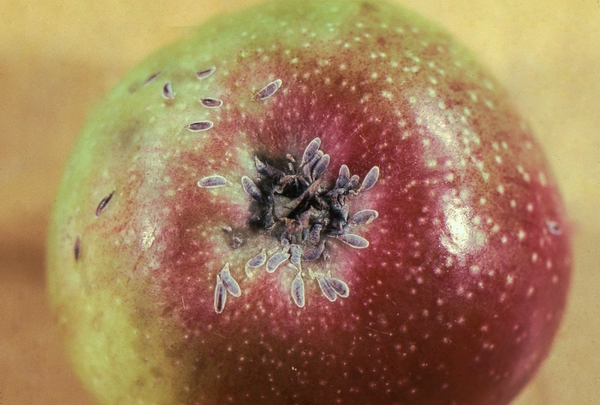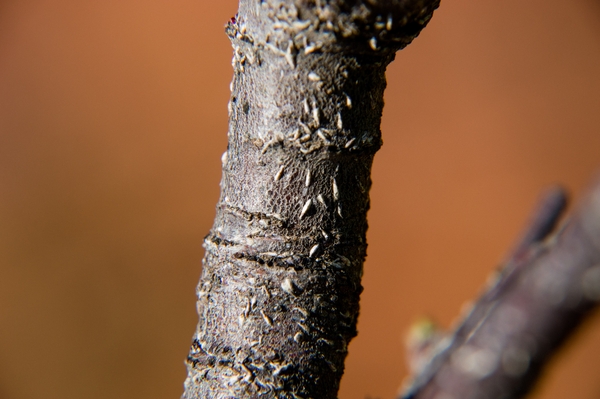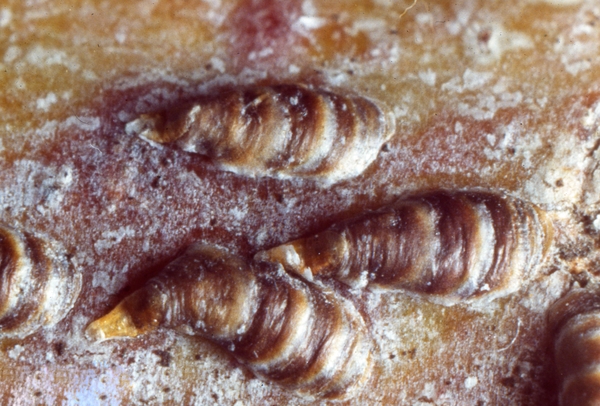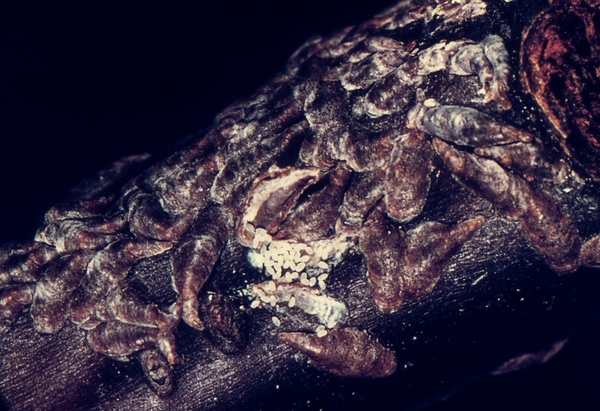Background and Description
Oystershell scale (Lepidosaphes ulmi; OS) likely arrived in North America with European settlers in the 1700s. Female insects secrete comma- or oyster-shaped coverings after attaching themselves to bark or fruit. They have been found on more than 100 plant species, including maple, ash, dogwood, and apple. Males become mobile and are seldom seen; females remain hidden under their waxy coverings which range from gray to brown and 1/16 to 1/8-inch long.
Life history
Female OS lay eggs inside their protecting coverings before dying at the end of the year. Eggs remain under the protective covering throughout winter and begin hatching from late April through June. The resulting nymphs ("crawlers") are yellow and look like specks about 1/25-inch long. They find a place on the plant to insert their piercing-sucking mouthparts and cover themselves with their waxy secretions. Females will remain in place but males will develop into flying insects which then seek out females and mate. In North Carolina OS has one generation per year.
Damage
Scale insects can damage fruit by their presence, and in large numbers they can stress whole trees. OS is not as common as San Jose scale in NC orchards, but heavily infested trees may die if left untreated.
Treatment
See the "Pest and Orchard Management Program" section of the Integrated Orchard Management Guide for Commercial Apples in the Southeast for the most current control guidelines.
Publication date: March 23, 2022
N.C. Cooperative Extension prohibits discrimination and harassment regardless of age, color, disability, family and marital status, gender identity, national origin, political beliefs, race, religion, sex (including pregnancy), sexual orientation and veteran status.





